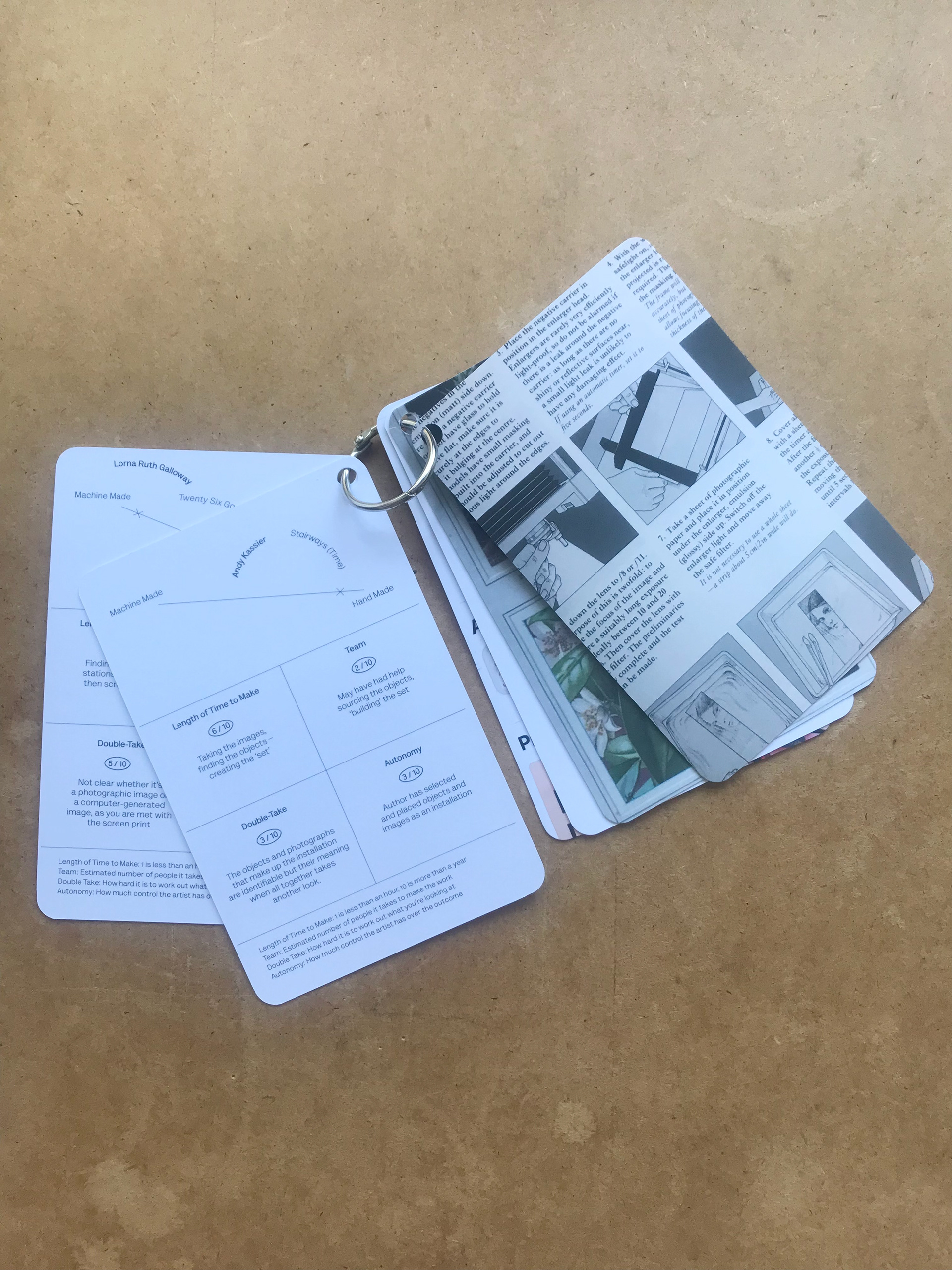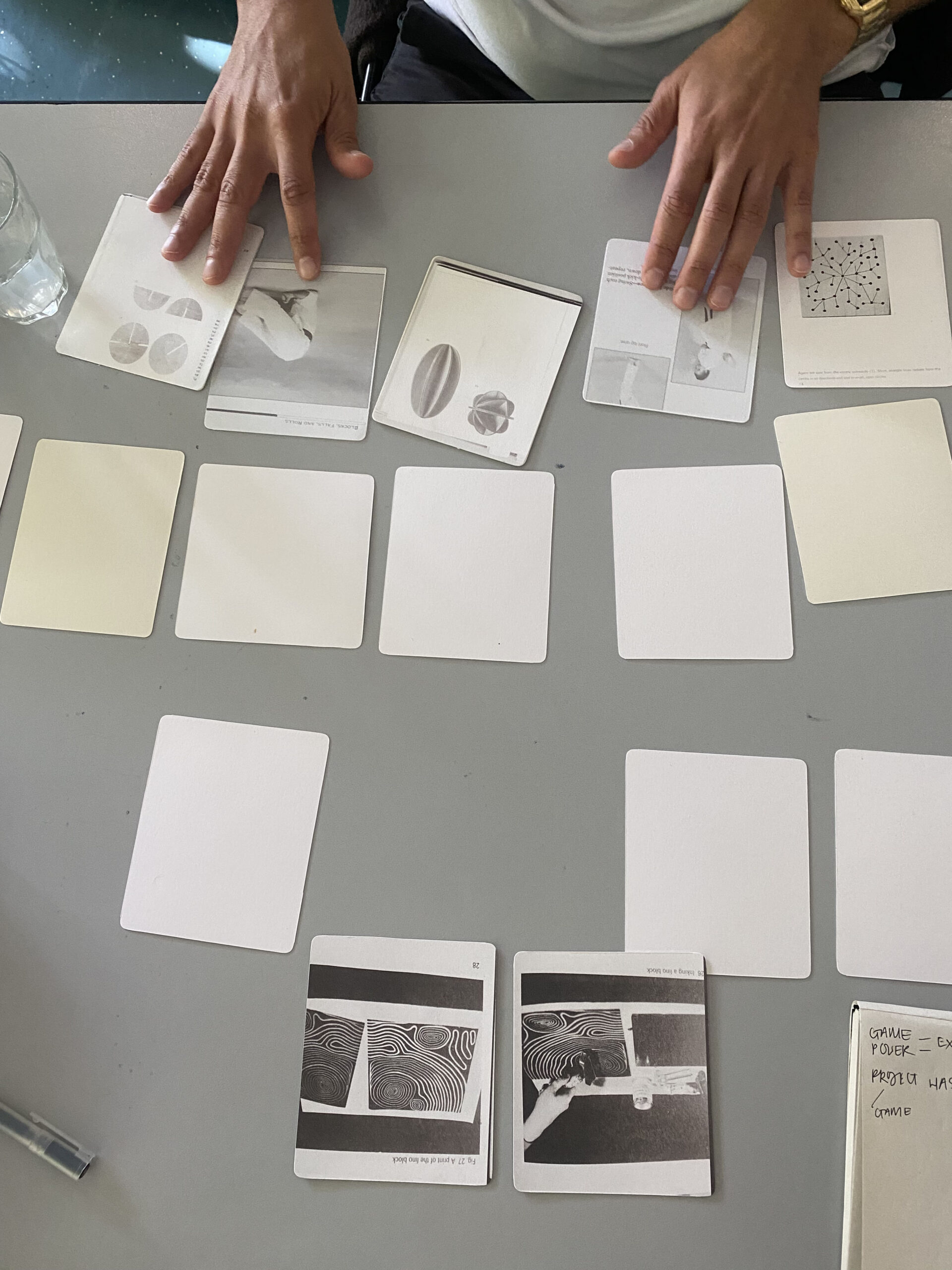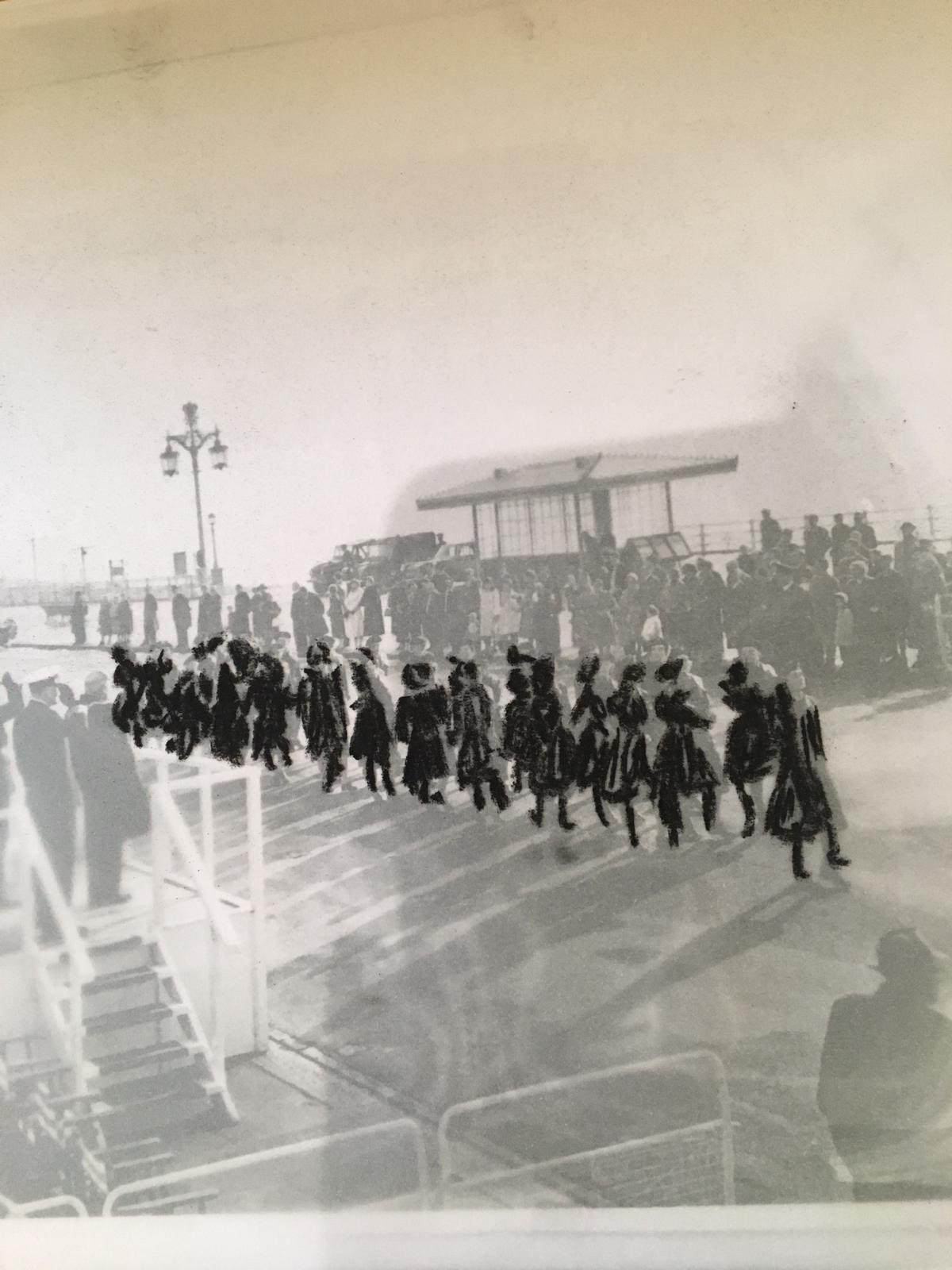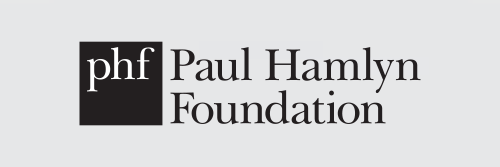





A Spotlight on… Eva Jonas
This month, Open Eye Gallery’s Socially Engaged mentee Anoosh Ariamehr spoke with Eva Louisa Jonas. Eva is an visual artist, facilitator and co-founder of a research collective UnderExposed, who took part in the gallery’s Crossing Sectors programme earlier this year, and currently has a zine The Importance of Things exhibited in Open Eye Gallery’s reception area. The Importance of Things is a zine created by young people who take part in Photoworks’ LGBTQ+ Photography Club which Eva facilitates.
The Importance of Things
Headphones, necklaces, sketchbooks are to name just a few items that are carried around with us and form a small part of an individual’s everyday archive. At the Worthing LGBTQ+ Photography Club in West Sussex, alongside conversations around the importance of these objects and items, the young people decided to use them as ways to get to know each other, moving through various photography exercises that positioned the objects in different ways – layering, cutting, reflecting and more.
The zine and the collected images and accompanying stories, are an invitation for others to share their own objects and connect with others through the stories and memories attached to them.
Anoosh Ariamehr: In a general sense, I found you to be an empiricist artist, someone who is deeply involved with phenomena and eager to understand them from different angles. Tell me about your journey and how you became this Eva who wants to reorder things and see them from a different perspective?
Eva Jonas: Much of my personal practice is about how the body is held within the landscape, and the kind of processes in which we find ourselves there, this weaves into my work in facilitation, and working in a participatory way.
I’m interested in photographing the different processes by which people are held within the landscape. This dances between a more literal interpretation, photographing a gesture within a landscape or you know a body of someone moving through the space, and then more subtly in the kind of traces that are left behind.
I always think of this image that I took of a light patch of grass that was left behind, after a paddling pool had a summer time stint in a garden. It had a kind of yellowing, circular grass shape with a lighter texture.
I suppose when thinking about different angles or perspectives, this type of approach in my personal practice requires slowness and openness and to have things reveal themselves to me when I’m walking or watching or observing for example. I’m not sure if the perspective is necessarily different, it’s just more that it necessitates a sense of slowness and openness to explore ways of re-seeing the body in landscape.
I published a book called ‘Let’s Sketch The Lay of The Land’, and I find that the title was really reflective of this photographic process, around photographing from different angles, but also this kind of building and sketching of the idea of a place, which is like the expression of ‘lay of the land’, it’s accumulating imagery to understand a sense of a place.
I definitely bring this to my work in the sense of sharing prompts and exercises that allow us as a group of participants to sit with spaces longer and record them in different ways. Usually as a kind of way of building an understanding of an environment before returning to record it visually. Entry points that focus on the sensory, sound and touch are so important for myself, and lots of the people that I work with.
So, in my work with the PhotoWorks LGBTQIA+ photography club, where I facilitate a programme running in West Sussex, in Worthing, throughout the programme, I pepper in prompts with the ideas that I just mentioned. One that particularly comes to mind, which was really fun, and a way to work outside, was shadow drawings.
So, unravelling a long piece of paper in a local green space and then drawing and recording the shadows of the leaves of the oak trees above and how it changed and moved as the sun moved, using charcoal and graphite on the paper.
I think this work is born from my personal work, but then applied to my approach to this project, gently unravelling spaces with the group that I’m working with and then relating it back to the thematic areas we are exploring.
I hadn’t heard of the word empiricist before, and it was interesting to hear how you feel that it relates to my practice.
Anoosh Ariamehr: As I see, objects are engaged in all your art world and you are too. Why are objects and phenomena important to you? Where does your involvement with objects come from and how do you relate it to photography? What do you want to say to the world?
Eva Jonas: I’ll use the The Importance of Things Zine as a jumping off point in response to this question.
The zine that Open Eye Gallery currently have on display, was made with the participants from the LGBTQ+ photo club at PhotoWorks in Worthing, that I mentioned previously, features work from part of our spring and summer programme of this year. I think this is something that’s quite a tangible outcome and relates, again, to a wider practice of making, and the dissemination of things – objects being able to be shared more broadly as a resource or a prompt.
I think with books and other things that I’ve made like cards or zines, it feels like there’s more of an opportunity for it to be shared. It can change the role of agency, as someone that’s interacting with it can actually have it, they can hold it in their own home or in between spaces, it doesn’t have to be in a particular space that perhaps they’re not so comfortable with, or perhaps where the ideas won’t resonate.
Within the books and zines and cards and other things, it’s mostly visual and photographic in its contents. It’s also tapping into ideas around access and games and different ways to respond to visual things, essentially. This is a firm thread from my personal practice to my facilitation work.
I suppose quite a clear example is that I’ve been making these pair cards, which are like a memory game where you turn them over and then you have to match two images that relate or are the same. This was just a really fun and quite lively way for people to access a project and its ideas in different ways.
I was then commissioned by The Photographers Gallery to create an exhibition resource as pictured here – I drew from the pair card concept.
One side of the card sent the player on an image treasure hunt, following visual clues to guide them to a paired work, the other side used ‘top trump’ style heading as a way in which to give the player more playful insights into how the work was made.
When we talk about objects, I think the tangibleness is really important, it feels like there can be more of a literal journey with them, and that there can be agency with the ways in which they’re held by different people.
Anoosh Ariamehr: Why are LGBTQIA+ people the subject of your work and why did you prefer to work for them? And how supportive are British society and government towards LGBTQIA+? What was the gap that you wanted to fill?
Eva Jonas: As a queer person, with my own lived experience of growing up and being able to resonate with creativity as a form of expression. I think the opportunity to share and hold a space that is for queer young people, has just been a really wonderful opportunity. To not only hold a creative space, but also a social space, this is the Photoworks LGBTQ+ photography club. A space to gather is so important, It’s an opportunity to meet others, and just come together.
I think what’s really interesting about the space itself is that socially, it’s really important for some and then creatively, it’s really important for others, and there’s also people who are a mixture of both. So, coming from a lived experience and growing up quite rurally, and not having that opportunity myself, being able to offer that and facilitate that for others is really important to me.
I’m also really interested in contemporary queer aesthetics within photography, and this forms part of my research that I do when planning the programme. Being able to research where visual queer aesthetics are now, what the entry points are, and then processes and techniques that I can work on with the participants is really exciting. Its an opportunity to also unravel the question of ‘where are we now visually?’
I think there’s a real clear thread that runs from the initial project that I did with PhotoWorks, which was called ‘Archiving your Life’, this was about a queer archive that was discovered in Worthing of two women called Tommy and Betty. The archive was made up of images of them, objects and even presents that they gave to each other. This very much informed the ideas behind the zine, giving the group the opportunity to reflect on their own archives and what that means for them.
Working with the participants for Archiving Your Life (a slightly older group of participants) there was a lot of discussion about the queer every-day, and the archive as being everyday and that being completely valid and also the ethics of looking at an archive with a queer lens, essentially. This was because there was some reference but they didn’t write anywhere that this couple were together, but there were nods to it, essentially.
Anoosh Ariamehr: What legacy will be left after this project and your future projects that can contribute to the collective thinking process of society? How effective do you consider the value of your work and what impact or change has it made so far? Why do you think your work is important and impactful?
Eva Jonas: It’s quite interesting because the ‘The Importance of Things’ zine was printed in July at the very end of the sessions. So, in terms of the legacy or the lifespan of the project, it’s still unravelling and unfolding. That’s why it was so great to be able to have it on display at Open Eye Gallery, where we can use the opportunity to begin some of those conversations based on the zine and how it can be used as a resource.
In terms of considering its impact, or its value, it’s also still unravelling, which is quite exciting. I’ve mentioned previously around some other resources I’ve created as they can come in and out of spaces and places and things that can come back to.
The zine itself is going to unravel and hopefully also work as a resource. Zines have a history of being a language of protest which is also something that’s really becoming part of the project as it progresses.
Also, the themes explored in it are giving agency to the importance of objects that are close to the group and individually to the different young people in the project, and it acts as a kind of an invitation for those that read the zine to also reflect on their own important things.
I have hopes that it will knit together with the autumn photography club and some of the young people that contributed to the zine and were part of building it, will continue getting getting ideas from it about where they were wanting to place it physically, then taking it away and sharing it with others such as their queer or LGBTQ+ groups at schools.
The young people were really excited with the final product, they took the zines away and shared them with friends and family.
The autumn programme of workshops will begin mid September, where we will get a bit more feedback about conversations that they’ve had with others, responses at Open Eye and next steps of where to place and activate it, together with the group.
Anoosh Ariamehr: Tell me about your experience, both from those you have collaborated with and from audiences and society; what are the general feelings and feedback in response to your work?
Eva Jonas: Taking the photography club as a jumping off point again, the feedback has always kind of been balanced between the intentions of the workshop blurring the creative and social space, and having the opportunity to connect with each other and meet new people. It’s always been largely positive.
It’s an ongoing attempt to get feedback from the young people, especially to share what areas they might want to explore further. So, it’s a constant work in progress, and it’s the constant exchange of feedback about new areas that they want to explore that act as a guiding point for myself, and the pastoral support in the groups that we run.
As for reception, it’s always been warm and really upbeat. As part of our club that we run at Audio Active (which is a kind of music and youth space) in Worthing, we have an open day during Worthing pride. There’s live music from audio active, and then there’s also opportunity for other people to get involved with photographic activities and see what we do as part of the group, and that is always warmly received from those passing or, friends.
There’s also working with allies as well, or those that are unsure of their position within the queer umbrella which is always a positive experience.
Anoosh Ariamehr:Do you share your work on social media, and how is it received?
Eva Jonas: Social media is a blessing and a curse because of the need to share and show that you’re maintaining momentum with ideas having an output, etc. Largely my work is quite well received.
Within my website and across social media, I post a mixture of personal projects, sharing in-between the past and present, and sharing both personal projects, and also programmes that are facilitated or a more kind of participatory work. It essentially just allows me to see more of the inherent threads between them.
I think on social media, the feedback is, it’s quite light touch. I like to also seek out quiet and more critical spaces, and I’m part of a peer to peer review group, which is also a good opportunity to get feedback.
Anoosh Ariamehr: As an artist who is trying to see things from a different perspective, what do you see as a problem in the way things are going that you would like this society to tackle or change? and what is your message to society and the whole world?
Eva Jonas: I suppose quite literally, in the zine that we’ve created as part of the LGBTQ+ photography club, It’s about the voice of young queer people being shared. It’s about not having to be over conceptualised, it’s very simple. It’s just around objects that are important to them and the story that has aligned with the objects.
I think a big part of that was around different forms of connection and sharing the element of connection that were built from the objects brought in by the young people in the group and I don’t know if it necessarily comes from like a completely clear message to tackle or change anything, but but it just an opportunity for the young people to be affirmed, which is exciting.
Hopefully, because of the way that it’s made, it will ripple out and be shared with others, with organisations and other groups and activated during workshops.
I think it’s also quite nice for it to be a bit quieter and a bit subtler as well, essentially. To offer a different entry point.
I’m using the zine as an example, within my wider practice and within my facilitated work, as I think for the young young people to see that, and for them to take it home and have something tangible to share with others.
Anoosh Ariamehr: So what barriers do LGBTQ+ people still face and what work do we still have to do in society to normalise queer identity?
Eva Jonas: I think there’s a barrier of representation of their experience being visualised or captured or for them to see and their experience be affirmed. Within the photoclub itself, there’s so much discussion on popular culture for young people, and the TV programmes and the music and how they align themselves with that. It’s something that’s quite obvious in the sense how you grow, and how you see yourself being affirmed and versions of your experience be reflected back to you. It’s everything for young people and I can only speak for my own experience of not having that reflected back to me as, I suppose, a barrier. Within the format of the photography club, now I’m sharing and introducing queer art and artists to them who are not always making work around their queer experience, but might just be making work. So, I think there’s also a kind of distinction of existence, that doesn’t have to be a clear exploration of one’s experience, but that it can just be part of an output.
It’s very important that you share the work of artists that use their experience as a kind of conduit or form of catharsis to explore their journey, or history or future.
For the whole Autumn programme last year, we explored queer utopias and queer world building. So, the opportunity to look beyond the present within the queer experience and for them to articulate and visualise what that could look like for them was really important and there were some really amazing responses that were around topics like cultural policy and social justice and on the other hand, there were also a part about building a future that could include more playful spaces.
Anoosh Ariamehr: Can I ask just one more question? As a displaced person, as a refugee, I found especially from my country, that the LGBTQ+ community remains invisible. Do you have any members of the group that are refugees from around the world?
Eva Jonas: I haven’t worked with any one in the group who share those experiences, I suppose this highlights different questions around access and the process of reaching young people to take part in the group. We have worked with young LGBTQ+ people through schools, youth groups and services, so it might be more about having an intention to reach out to displaced LQBTQ+ people through services. Thank you for this question.
Eva Jonas (@evalouisaj): Eva Louisa Jonas is a visual artist, facilitator, and co-founder of the practice-based research collective, UnderExposed. She works collectively and collaboratively, using photography to explore the processes by which people situate themselves within landscapes, focusing on its expression in trace, gesture, and surfaces. Recent work pulls from these threads, embracing slow looking, informed by interactions and processes that emerge from participatory workshops. Eva’s first book Let’s Sketch the Lay of the Land was published in October 2020 with a Parisian publisher, September books. She is currently working as part of The Photographers Gallery education team on the EPQ in Photography course and facilitating the Photoworks West Sussex LGBTQ+ Photography Club. Additionally, she has worked with many arts and community organisations including The Henry Moore Foundation, The Royal Academy, The Dartington Trust, Queer Heritage South, Towner Gallery, Brighton CCA, The Hummingbird Project, Switchboard, and as Associate Artist on Leap then Look’s project Play, Interact, Explore.
Anoosh Ariamehr (@anooshphotography_): Anoosh Ariamehr is a photographer and creative social writer who has a strong interest in social issues that affect people’s lives. This passion led him to actively engage in Afghanistan media and online platforms, advocating for freedom of expression, women’s rights, social equality, minority rights, LGBTQIA+ rights and stands against class discrimination, systemic government corruption, racism, cultural-religious and stereotypes. Eight years ago, due to his activities, he had to leave his country and sought refuge in Turkey and Greece. He was facing language barriers and wondered how he could continue being a storyteller for the thousands of displaced and refugee individuals. It was in Greece that he realised how powerful and democratic photography could be as a tool for storytelling without linguistic limitations. He started with street photography and portraiture and he believes l that there are numerous stories to tell in the streets and faces. After he became acquainted with Open Eye Gallery, due to shared values, Open Eye Gallery supported him to work as a mentee to become a professional in socially engaged photography. Anoosh strives to bridge the gap between the local community and refugees with the help of photography and storytelling, supported by Open Eye Gallery and the participation of humanitarian organisations.

